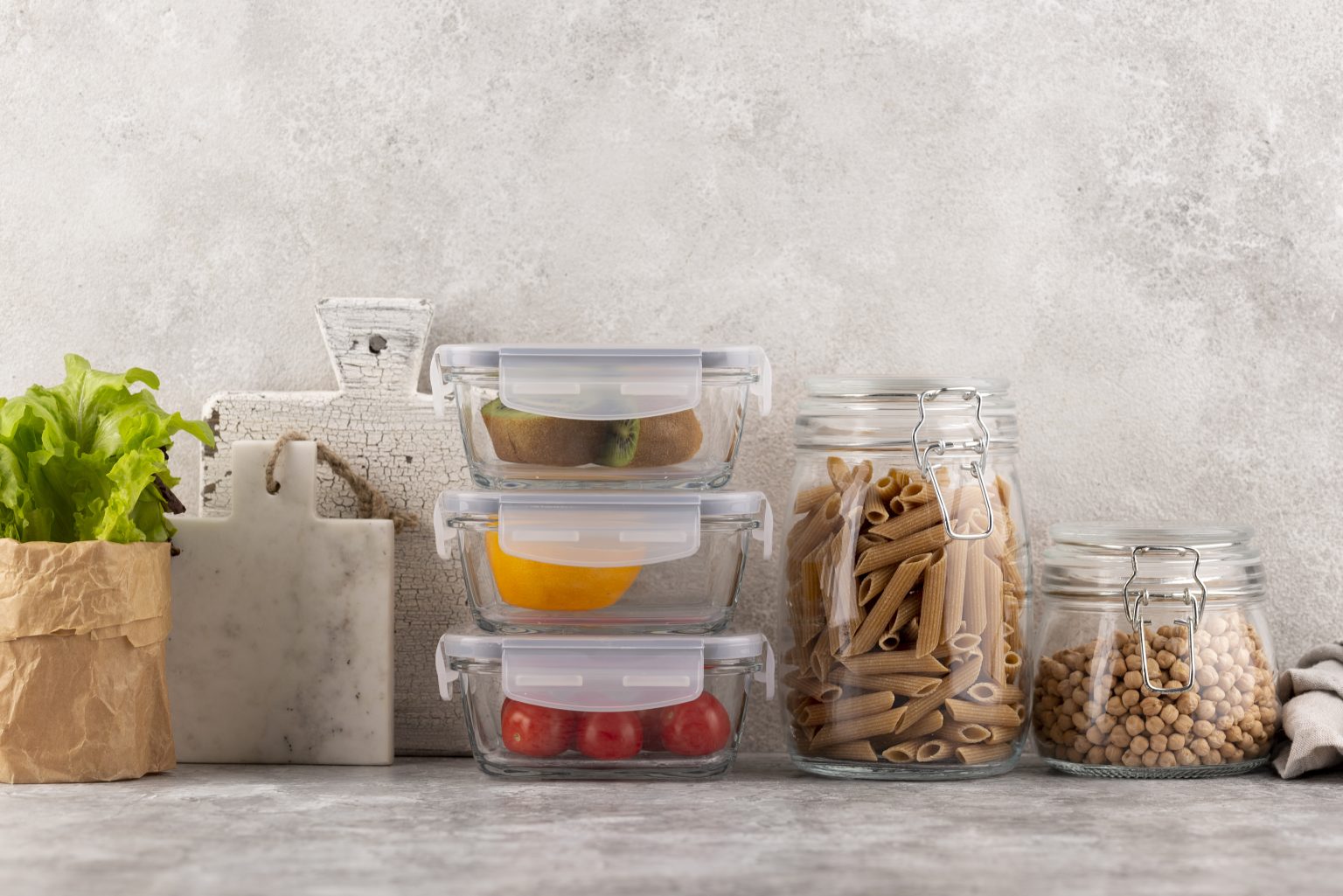Selecting an appropriate food storage container might seem trivial—until food spoils, leaks, or turns unrecognizable in the back of the fridge.
Containers do more than preserve ingredients. They influence how meals are prepared, how smoothly a kitchen runs, and how much gets used instead of wasted. A tray of roasted vegetables from Sunday, for instance, might become soup on Tuesday and wrap filling by Thursday.
This post compares glass and plastic containers from a practical standpoint: visibility, hygiene, durability, cost, and how each material supports everyday cooking.
Rethinking Leftovers: From Waste to Resource
Whether food is reused or ignored often depends on how it’s stored. A clear container placed prominently in the refrigerator acts as a visual prompt. Rather than being seen as excess, its contents become part of future meals.
For example, a serving of pasta in a stained, opaque container may go untouched. The same portion in a transparent glass dish is more likely to be reused in a salad or baked dish. Visibility and container design directly affect whether leftovers become meals or waste.
Comparing Storage Materials: What to Consider
Glass and plastic both serve storage needs, but they encourage different behaviors. Here’s how they compare:
Visibility for Storage and Reuse
Reusable ingredients are more likely to be used when stored in visible containers like glass. Many plastics start clear but discolor over time, making contents easy to overlook, even when still good. For anyone reducing waste or streamlining weekday meals, visibility makes a measurable difference.
Hygiene and Long-Term Maintenance
Plastic often absorbs odors and stains, especially from acidic or oily dishes. Even after washing, residue can linger. Glass resists staining and smells, stays cleaner-looking, and typically requires fewer rewashes or replacements. Both materials are food-safe, but glass tends to retain its condition better over time.
Durability and Versatility
Plastic is lightweight and won’t shatter, making it useful for freezing or travel. But repeated washing or heating can cause warping or degradation. Glass is heavier and more fragile, but it handles temperature changes better. Many glass containers are microwave and dishwasher-safe, capable of moving from oven to fridge to table without switching dishes.
Upfront Cost vs. Replacement Frequency
Plastic is cheaper upfront and common in multi-piece sets, but it’s also more likely to be replaced due to wear or staining. Glass costs more initially but often lasts longer with consistent use, offering better value for frequent cooks.
Matching the Container to the Task
There’s no single right answer. The better question is: what’s the intended use?
- Glass works well for leftovers you plan to reuse within a few days, oven-to-table serving, and visible fridge organization.
- Plastic is better for freezer storage, travel, and short-term use where weight and breakage are concerns.
Many kitchens benefit from keeping both on hand, with materials matched to the task rather than routine. To explore storage options designed with these needs in mind, buy one here and experience the difference.
Conclusion: The Everyday Impact of Storage Choices
Food containers play a functional role in how kitchens operate day to day. Clear, durable options support reuse and reduce waste, while those prone to staining or obscuring contents often lead to neglect.
When containers align with daily workflows such as meal prepping, batch cooking, or portioning, they contribute to time savings and more consistent food use. Consistent use of well-suited storage tools supports a more functional and less wasteful kitchen environment.

